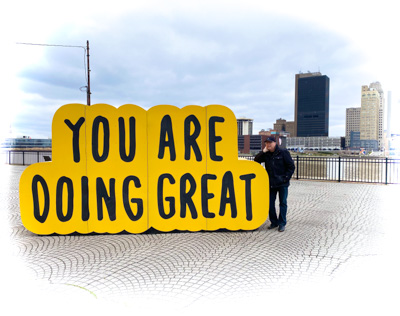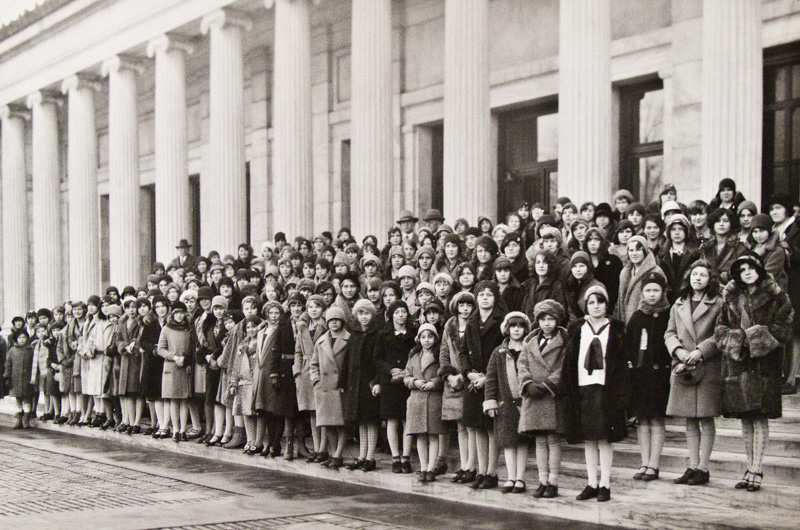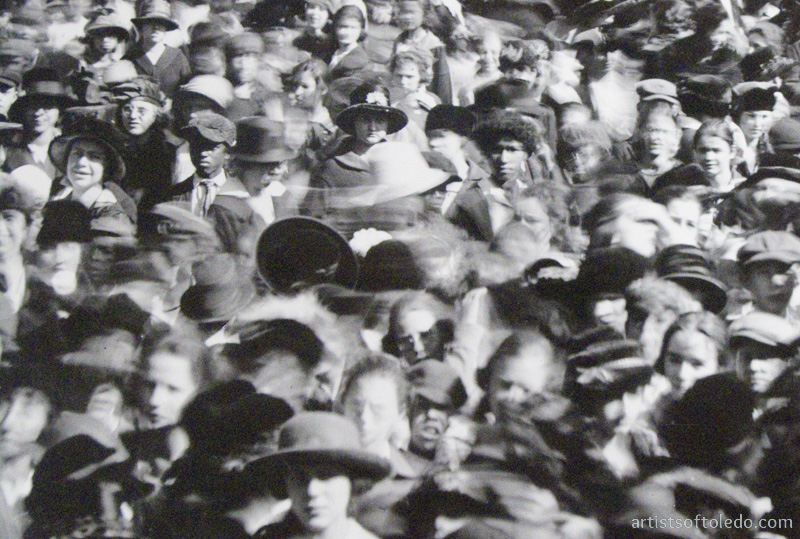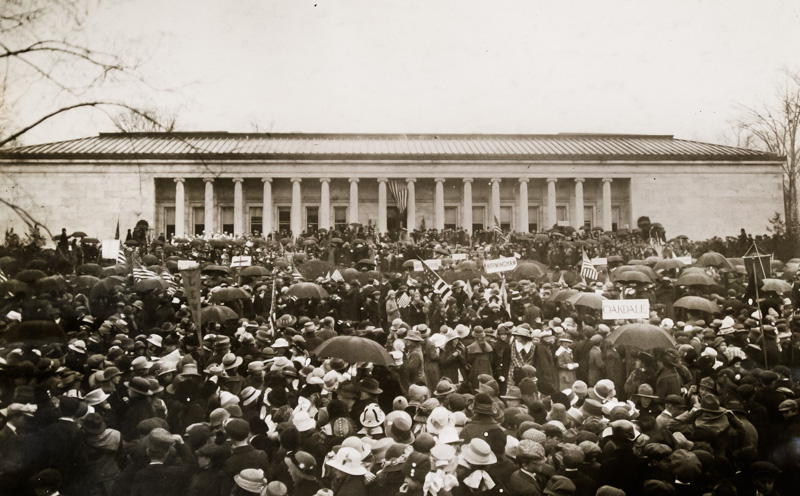Remember when The Toledo Museum of Art sold our three famous French Impressionist paintings for 59 million dollars – Adam Levine claiming it was to buy diverse art, because their data showed a lack of diversity? “A collections audit indicated the greatest imbalances exist across gender, sexual orientation, race and ethnicity, nationality and geography, and material/medium.” Remember when Adam Levine told us that the museum never meant to have multiple works by any one artist, and that our Cezanne, Renoir and Matisse paintings were no good? Quoting Edward Drummond Libbey, he said, “Let the multitudinous array of the mediocre be relegated to the past and in its place be found the highest quality, the best examples and the recognition of only those thoughts which will stand for all time.”
see blog posts:
Toledo’s broken promise to the Cezanne Exhibition in Chicago
I thought it was BS then, but last week it really hit home, when the 2022 Burns Halperin Report was published, which highlighted an extreme lack of diversity among museums as a result of a survey of 31 American art museums. The Toledo Museum of Art was one of them.
The stats revealed by the 2022 Burns Halperin Report were stunning and shocking, but it just didn’t ring true in regard to our museum, so over the weekend, I did my own little survey, with data that I collected from the Toledo Museum of Art’s public online collections database.
The purpose of my survey is to compare our percentages to the percentages of the survey of the Burns Halperin Report, because The Toledo Museum of Art took part in the survey as one of the 31 American art museums whose art acquisition data was examined.
The Artists of Toledo Report:
A breakdown of the race and sex and nationality of the artists whose works were acquired by The Toledo Museum of Art during the years 2017–2022 in the categories of painting, photography, ceramics, glass, sculpture, prints, drawings, metals and textiles, a total of 204 artists.

The Artists of Toledo Report Findings:
37.5% Women 62.5% Men
57% American 43% Rest of World
28% American Women 30% American Men
14% Black American 4% Native American 40% Other Americans
For comparison, the 2022 Burns Halperin Report:

These are the basic differences between the methodology of the 2022 Burns Halperin Report and the Artists of Toledo Report:
The Burns Halperin Report surveyed each of the 339,969 works acquired by 31 museums from 2008 to 2020, whereas, for simplicity, I surveyed the 204 artists themselves who had work acquired between 2017 through 2022, at only one of the surveyed museums – The Toledo Museum of Art.
The Toledo Museum of Art added one or more works made by the 204 artists between 2017 and 2022. I counted the artists, I did not count the number of works added. (Perhaps there were 300 to 500 works, as there were multiple works from some of the 204 artists. It is easily verified on the online database and in museum annual reports. I thought it was the artists themselves who were important for my report.)
The 2022 Burns Halperin Report differentiated Black Americans from all artists.
I differentiated Americans from the Rest of World artists and compared Black Americans to the out-group “Other Americans” (Caucasian, Japanese-American, Chinese-American, Vietnamese-American, Iraqi American, etc.) I added Native Americans in consideration of this under-represented group that is doing better. Not having a breakdown for rest of the world group, for which Toledo consisted of 43% of all artists, may have skewed the perceived U.S. population race ratios of the Burns Halperin Report, but even so, how different the two reports look! Black Americans compared to Other Americans appear to be well-represented at the Toledo Museum of Art, where it is gender equity that appears to be needed the most.
The fact is, The Toledo Museum of Art is racially diverse,
but lacks gender equity.
The Toledo Museum of Art still has nothing to show for the sale of our Matisse, Renoir and Cezanne paintings. What happened to that money, and what financial institutions are profiting from it? That money should have gone back into the Libbey Endowment to be used for art. What deals were made to motivate our museum to renege on Toledo’s commitment to the Cezanne Exhibition in Chicago, that made Adam Levine sell our Cezanne the very week of the opening of the Cezanne show? Our painting was supposed to be in that show – it appears full-page in the Exhibition catalog! Our museum, seven months later, has added no new artwork with the proceeds of that urgent sale.
So many lies to the community. The Toledo Museum of Art took advantage of the politics, and pulled the wool over the people who live in Toledo. Not cool.
The rise and fall of a once-great museum
As for women, the museum has hurt the women of the community by taking away the two things that gave women equality – adult art classes and local artist shows at the museum. There is no disconnect between “local art” and “museum art” — I found that one artist of Toledo (Jack Schmidt) and one artist from Toledo (Joseph Kosuth) had been collected by the museum during the past six years. They are both men, but if we were to go back a few years, we would find Toledo women among the Toledo Museum of Art’s new acquisitions. Among them are Edith Franklin and Leslie Adams, both with multiple works in the museum’s collection.
Each one of these Toledo artists owes their beginnings to the late, great programs of the Toledo Museum of Art. Jack Schmidt, glass artist, was born in Toledo and learned his craft from Dominick Labino. If it had not been for the Toledo Museum of Art School of Design, there would not have been the historic Studio Glass Workshop in 1962, during which Dominick Labino formulated a way for individual artists to work in glass. Imagine that. Today, glass is the largest category of art collected by the museum, complete with its own world-class building.
Edith Franklin, born 100 years ago, who I wrote about this month, is a prime example of an artist who benefited from the museum’s classes (from age 10 to age 65) and the vibrant local art shows the museum has since done away with. But at least we have Edith’s work in the museum to remember that by.
Leslie Adams is also a product of the museum classes and local art shows. She was in multiple Toledo Area Artist Exhibitions before they were eliminated, culminating in her own one-person show at the Toledo Museum of Art in 2013.
Joseph Kosuth benefited from the museum’s free Saturday children’s art classes. Then, after studying at the Cleveland Institute College of Art, he left Ohio and never came back. His work has been acquired by top museums including the the Museum of Modern Art very early-on in his career. The Toledo Museum is lucky to finally own two works by Joseph Kosuth, acquired in 2018 and 2019.
I myself have benefited greatly by being able to take the museum classes, which I took from age 10 through my third year of college. I went on to have a successful photography career in New York. I have work in the Chicago Institute of Art and other museums. I helped Adam Weinberg (who is now director of the Whitney Museum of American Art) set up the first photography darkroom underneath the Peristyle when he was a Fellow at the Toledo Museum in the late 1970’s, and I was the first photography teacher of the free Saturday museum classes in 1979. Without the educational opportunities I had at the museum, I know my life would have been profoundly different.
Perhaps it was the democratic enrichments that the museum gave to the community in the past that have made the Artists of Toledo pie chart look more balanced than the Burns Halperin Report. So, most museums are not like the Toledo Museum of Art? We knew that. But it is odd now, that the Toledo museum has inwardly stripped the community of these great resources, while outwardly, striving for diversity as a “brand.” Fairness came so naturally to the Toledo Museum of Art in the past. But now, with the school gone, and the shows gone, within that vacuum they have hired a large staff to oversee diversity. I can only assume there must be a lot of grant money for that.
The Toledo Museum of Art was apparently a very unique museum. It did indeed have such a great reputation that in 1946, it attracted the great Otto Wittmann, who came to Toledo and became its director because it had such a great education department and community involvement. He grew the museum’s collection for 30 years, all that time with the classes and the local art shows going strong.
The Toledo Museum of Art should bring back classes for adults and children and reinstate the local artist shows. This would help with gender equity, both within the Toledo community and within the larger world. It would help artists in our community reach their potential, if anyone cares.



























